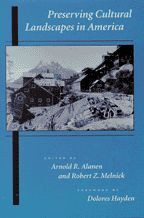
Reviews
Proving Ground provides fertile terrain for thinking about the politics of expertise and makes important contributions to intellectual history and Appalachian studies. Slavishak has produced an eloquently written and thought-provoking book.
Eloquently written and prodigiously researched... Proving Ground is an intensely interesting story of intersecting perspectives—particularly of place, environment, and culture—that gives "close attention to the messy material of human encounters with landscapes" (p. 13). This provocative book will lead regionalists to examine what made the Appalachian proving ground similar, and different, from other such terrain.
Exhaustively researched and skillfully composed... The most impressive features of Proving Ground are the depth of Slavishak's research into important but relatively unknown personalities and cultural trends, regional and national, and his familiarity with the history and vocabulary of each of several very different professional, aesthetic, academic, and recreational pursuits as practiced within the Appalachians.
Situated at the crossroads of environmental history, critical regionalism, and visual studies, this masterful book synthesizes these fields to assess the approaches of several Appalachian interlopers. Slavishak's case studies of preservationists, planners, hikers, anthropologists, and photographers convincingly demonstrate that specialists proved themselves to their peers by gaining and displaying on-the-ground expertise through formidable, marginalized landscapes... Foremost among Slavishak's many fine attributes is his ability to contextualize and analyze... a skill he exhibits throughout this diligently researched and elegantly written book, which proves his own expertise in the fertile interdisciplinary ground of Appalachian studies.
Slavishak throws light on how conceptions of place can be exported and disseminated. And by studying professionals rather than leisure travelers, Slavishak has revealed how and why a heterogeneous group of them accessed seemingly remote corners of Appalachia and sought to carry their experiences out again.
An important contribution to Appalachian studies, as well as a valuable work of intellectual history, Proving Ground has a novel and provocative vision.
Slavishak does us all a service by making a nationally relevant argument about the Appalachian region's importance as a professional proving ground. Refreshingly innovative and gracefully written, this cutting-edge book works at the intersection of environmental and cultural studies in valuable ways I have seen few other authors attempt.
Filling a gap in the scholarship about Appalachia, Proving Ground studies the processes and techniques of 'intervenors' in the mountains. Well-written and well-documented, this book will make a lasting contribution to the field; I expect it to shape the next generation of Appalachian studies scholars.
Book Details
List of Illustrations
Acknowledgments
Introduction
1. Expert Vision
2. Terrestrial and Human
3. The Stern Grip of Circumstance
4. A Priceless Asset
5. William Gedney and the Look of Coal Country
Conclusion
Not
List of Illustrations
Acknowledgments
Introduction
1. Expert Vision
2. Terrestrial and Human
3. The Stern Grip of Circumstance
4. A Priceless Asset
5. William Gedney and the Look of Coal Country
Conclusion
Notes
Bibliography
Index






